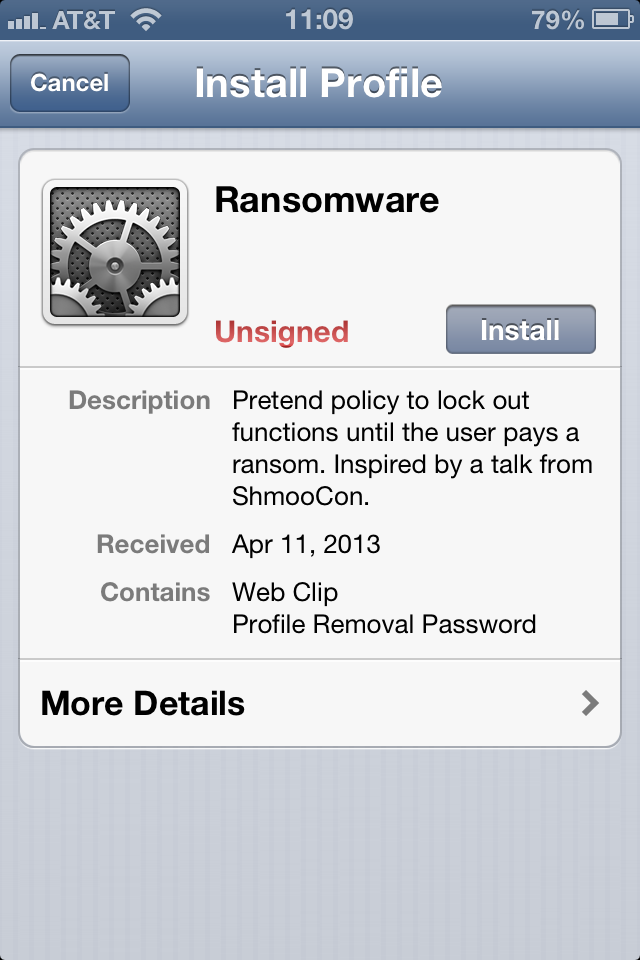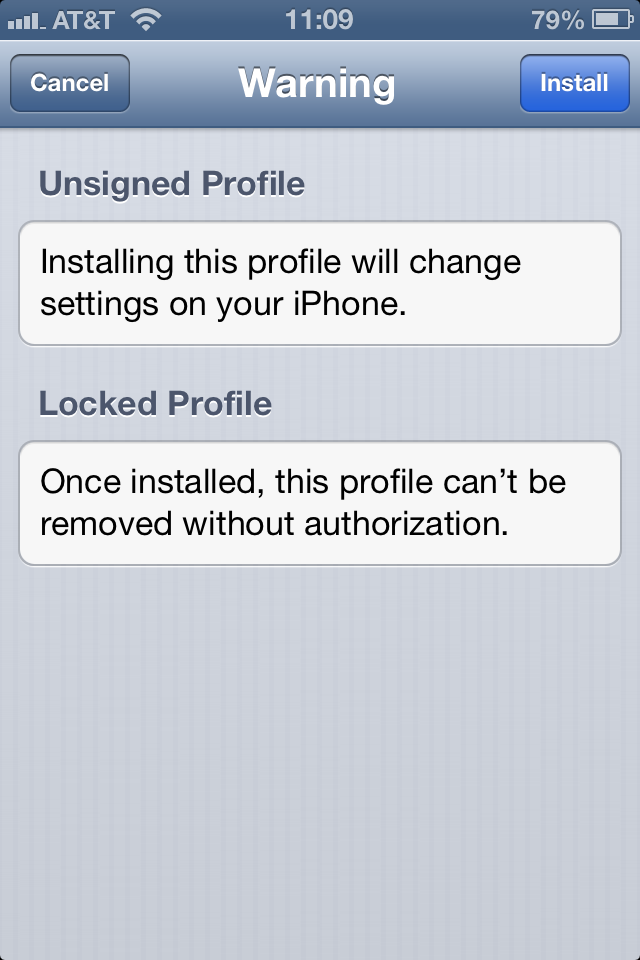A couple of months ago, at ShmooCon 2013, Tim Medin gave a great short talk titled “Apple iOS Certificate Tomfoolery.” One of the most interesting ideas I took away from this talk was the idea of ransomware delivered through a configuration profile. Briefly, configuration profiles can be used to control many aspects of an iOS device’s configruation. They can enable features, disable features, and even hide applications from the user.
This is the tricky bit: Create a configuration profile that disables Safari, disables installation of applications, even disables iCloud backups, and adds a “READ ME” web page to the user’s home screen. Put a password on the profile, so the user has to enter the password in order to remove it. Now, you just need to convince the user to install the profile, and you can do that simply through email or SMS phishing. Once they install it, half their expected functionality suddenly goes away, and if they tap on the “READ ME” page, they’ll see the instructions as to how to pay ransom to receive the password to remove the profile. Win! (well, not for the user).
Now, fortunately, there are a couple of flags that (might) alert the user that something odd is happening. First, in the initial profile installation screen, is the list of contents, which includes “Profile Removal Password.” Similarly, tapping on “More Details” clarifies that this is a locked profile. Of course, if the email introducing the profile was written well enough, then the user might already expect and accept this. Hopefully we can train them not to. Also, if the user has a passcode on their device, then they have to enter their passcode as well, so it won’t simply install without the user noticing.

Profile Install

Profile Warning
But what if they ignore all the warnings, and install the profile anyway? Well, all might not yet be lost. Turns out, the removal password is included in the profile, in plaintext. The attacker could choose to encrypt the profile, but to do that they need a public key from the target device, which might not be so easily acquired. So, assuming the profile is not encrypted, just pull down the .mobileconfig file from the original phishing email, open it up, and find the password.
Of course, the attacker could get really tricky, and serve up a file with a different password each time, placing some kind of key into the ransom notice (“Pay me $35 to remove this profile. Use the word ‘ostrich’ when you send me your bitcoins”) and then that key would be used to derive the actual removal password. If this is the case, then each time you hit the page you’d get something different, and so you wouldn’t be able to recover the correct password. In that case, the only real way to remove it is either to pay the ransom, or, if the device is jailbroken, get in and remove the profile directly from the filesystem.
Sooper Sekrit
In iOS 6.x, a new feature was introduced that can prevent the user from installing profiles. This feature is only available in Supervised Mode (via the Configurator application), however, and so isn’t of much use to the general population.
Want to hear more about configuration profiles and keeping your iOS devices secure? Come to my talk at SOURCE Boston next Thursday!


